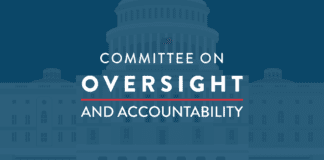This article was originally posted on The Hill.
Were Friday’s inter-Korean summit meeting between the South’s Moon Jae-In and the North’s Kim Jong Un a fictional play, it would be a commendable aesthetic fulfillment of the Aristotelian unities: The unity of “action” (single action — the meeting itself), “time” (occurring over no more than 24 hours — April 27), and “place” (unfolding in a single existing place — the border village Peace House).
But because the compressed daylong date, capped by an elaborate Korean-themed dinner, carries very much real-life nuclear and gulag consequences, the rendezvous that proved long on bonhomie and woefully short on dismantlement discussions on weapons-and-camps of mass destruction merely reaffirms a cliché: Karl Marx’s dictum that history repeats itself in tragi-farcical cycles.
{mosads}Worse still, the event may come to be remembered not just as another farcical sequel to the first inter-Korean summit in 2000 — which entailed a bribe transfer of $500 million from Seoul to Pyongyang — but also as a prequel to a yet-to-be born, ill-fated meeting to be forgotten. President Donald Trump must realize that he is walking right into an elaborate trap set by the wily North Korean leader. By lining up world leaders for meetings while making no concessions beyond verbal palliative, Kim has willed himself into Global Everyman who thinks no ill.
For decades, few outside the military establishment took North Korea seriously. Few recognized that the Kim dynasty is deft at both wielding the stick and dangling the carrot. Hard as it may be to acknowledge the ultra-weird and irresistibly mockable regime as a sophisticated adversary, the scorecard on nuclear diplomacy over the past quarter-century tells it all: Tens of billions of dollars of aid won by Team Weird, some of which must have funded the “military-first” state’s nuclear and ballistic missile programs. Team America and its allies? In approximate terms, less than nothing.
Kim is poised to preach to the world that his policy of socialist pugnacity and anti-social patience really pays. In other words, Kim’s nukes and gulags, made possible in part by the generous gifts of Kim’s engagers, are for keeps. To presume otherwise, for example, that the Korean dictator-in-perpetuity, who, after a banner ballistic year in 2017, had a sudden change of heart in 2018 and decided to be a nice guy going forward would be a rarefied form of ahistorical self-hypnosis.
Further, to believe that Kim called for talks because of Trump’s threats of “fire and fury” and “total destruction” would be to engage in an even more esoteric form of mental exercise. Trump made the former threat on Aug. 8, 2017. Just three weeks later, on Aug. 29 (known in the North and South as “National Humiliation Day,” for on this date in 1910 the Korean peninsula was colonized by Imperial Japan), Kim proved that Trump’s sound and fury signified just about all of nothing by firing an intermediate-range ballistic missile over Japan.
Five days later, Kim ordered his nation’s most powerful nuclear test to date, a thermonuclear test blast that fractured the mountain above the test site. The latter threat, in conjunction with derisive remarks of “Rocket Man,” Trump made at the United Nations General Assembly on Sept. 19. Undeterred, Kim fired off his nation’s most powerful intercontinental ballistic missile in late-November.
The Moon-Kim meeting reaffirms the truism that a summit meeting is neither a family reunion nor a blind date. Rather, a summit meeting is the acme of often protracted, contested negotiations, even between allies. It is a symbolic reaffirmation of major agreements already reached between the parties. Yet both Moon and Trump have approached their meetings with Kim as a possible political windfall, armed with little else than blind faith in their ability to tame the ruthless dictator.
For Moon to rush into a summit with Kim in spite of no perceivable change in Pyongyang’s policy was the first mistake. Just as his predecessors had done, Moon chose to ignore his Northern counterpart’s ploy of dangling the possibility of denuclearization and peaceful coexistence.
Going all out at the actual meeting on the flimsy atmospherics of inter-Korean rapprochement while failing to press Kim on substantive issues such as denuclearization and the suffering of the North Korean people was Moon’s second mistake. Moon dutifully played his self-cast supporting role to Kim-the-lead-actor’s empty theatrics. They planted a “peace tree” together, toasted each other, and Moon played host to the dystopian state’s royal family.
Moon’s third unforced error was reveling in pan-Korean ethnic identity and nationalism, with its implicit anti-U.S. bent. Such indulgences certainly boost one’s fragile ego and approval ratings. But it plays right into Kim’s hand of untying the blood-forged bond between the United States and the South while painting the United States as the intransigent aggressor that willfully impedes inter-Korean reconciliation and reunification. Accentuating ad nauseam the “blood bond” between the North and South, all the while peddling the practical virtues of making concessions to the North Korean tyrant, begs the question: On whose side stands Moon?
To read more, please click here.



